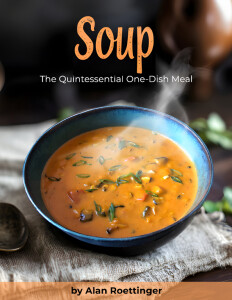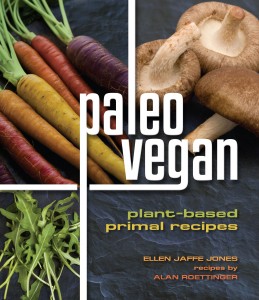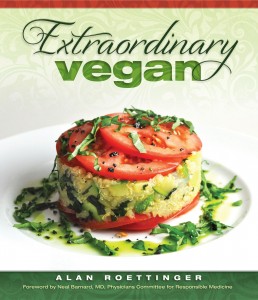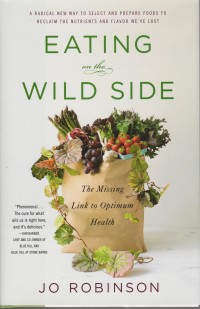I saw the most endearing carrot-thin yams at my local Natural Grocers this week, and I just had to get some. Normally, like most people, I roast yams; it’s easy, it works well, and the light caramelization they acquire that way adds wonderful flavor. But these little things seemed to be clamoring for a different sort of treatment, and I’ve never been one to ignore a vegetable’s expressed wishes. Eventually, an idea came to me that I thought might work.
I peeled the yams and cut them into discs about an inch thick. Selecting a sauté pan wide enough to accommodate all the pieces in one layer, I brushed the bottom generously with coconut oil. I laid the discs out in the pan cut-side down and dusted the tops with ras el hanout and fine grain Celtic salt. Then I poured in just about a half-inch of water–careful not to splash any on the yams–and added a vegetable bouillon cube, broken into small bits. I placed the pan over high heat and brought the water to a simmer, immediately adjusting the heat to prevent it from coming to a full boil. I covered the pan with a glass lid, which would enable me to monitor the water level.
While the yams bubbled contentedly, I put a small pot of quinoa on to cook in the normal way, with salt and vegetable bouillon. As the water boiled away, the bottoms of the yams began to caramelize lightly. Soon the quinoa was done, and I added it to the pan, tossing and flipping it all together. I wasn’t ready to serve yet, so I covered the pan and set it aside while I made another dish.
Yesterday I picked up a bunch of flawless collard greens, and decided to prepare them my favorite way. Collards take a good while to cook, so what I like to do is braise them with onions, garlic, dried red chile, and tomato. First I heat the pot dry, over a high flame. Then I add a couple tablespoons of coconut oil, swirl it once as it quickly melts, and then add a large onion, cut into wide pieces.
I stir just often enough to prevent sticking, until they begin to color lightly and turn translucent. Then I add seven cloves of garlic, thinly sliced, and a dried hot red chile or two, stirring constantly to keep the garlic from burning. Once the divine aroma has reached the neighbor’s house and beyond, I add the collards, center rib removed and leaves cut into roughly two-inch squares. As soon as the leaves wilt slightly and the mixture is beginning to dry, I add about a cup or more of chopped peeled tomatoes, along with salt, pepper, and perhaps a tablespoon or more of water. Stirring briskly, I turn the heat down to low. After that, it’s just a matter of time, and an occasional stir to make sure nothing sticks. For such a simple affair, this collard dish has amazing depth, concentrated flavor, and delightful textures.
When it seemed the collards would be done soon, I reheated the quinoa and yams. At the last minute, I added a bunch of scallions, thinly sliced, and half a bunch of chopped cilantro. After tasting it, I decided it needed a little more ras el hanout, a dash of cinnamon, and a spoonful of honey (which would be the Moroccan choice, but I used agave, to keep the vegan police off my back*).
I served the two dishes side by side on the plate, and that was dinner. I’m always astonished at how much quinoa I can eat without feeling bloated afterwards. It’s like it just disappears. The collards made an ideal partner for it, not only contrasting the colors and textures of the quinoa dish, but providing a neutral counterpoint cuisine-wise–spicy, but with no distinct spices or herbs to nail it down.
I don’t know if my Moroccan friends would approve of my blending their culture with Bolivia’s, but the taste of this new dish just might have softened a pugnacious stance considerably. We may never know, because my wife and I ate it all, so there is no evidence left on which to indict me in the international court of culture crimes. Trust me, my habibis, it was very good!
* I’m not convinced that honey is necessarily a cruel treatment of bees. Although certainly the industrial production is just as abominable as the factory farming of animals, and the quality of that honey is poor to say the least, I happen to know some conscientious beekeepers who take very good care of their bees, and turn out excellent raw honey.
Anyone out there want to chime in and give me a rational argument for staying away from even a teaspoon, here and there, of properly produced raw honey?
.








Here’s my thought about honey… I don’t need it, so why take it from the bees just because it tastes good? Sorry if this seems simplistic, but I figure bees don’t make honey for us. It’s for them, for survival during the winter and for their young. No matter how conscientious the beekeepers, I just can’t see how taking the honey and giving them sugar water in return is a fair trade.
That said, I know this is a common vegan debate, and both sides make good points. The above are just my thoughts, not a judgement on you if you decide you think differently.
Thanks Rhonda. I understand your position well. I’m considering a visit to a honey producer to see what actually takes place there. There is more to the story of human-bee relations than mere thievery on our part. Certainly wild bees are not eager to let us take their honey, but there is anecdotal evidence that those living in human-fabricated hives aren’t resentful at all. Also, I just this morning read an article that makes me wonder even more about this unique relationship we have with bees:
http://www.care2.com/causes/teaching-beekeeping-to-children-improves-behavior.html
I love bees. here in Hawaii, it doesn’t get cold, so they can keep producing honey year ’round. They are, however, threatened here with the varroa mite and other new and exotic diseases seem to pop up weekly. I’ve talked with a few organic honey producers here who seem to have healthy hives by taking care of the bees and their honey houses using organic methods. Not that there are no problems with these special techniques, but less bee deaths and also indications that some bees are gathering resistance to disease by supporting them in healthy ways to develop immunity – something that doesn’t happen when one douses them and their homes with chemicals. I could go on and on about our spiritual connections with bees ( my daughter’s specifically) but I’ll just say that I’m thankful the bees love us, too.At this point in time on our planet, not only do we really need the bees, the bees need us. Let’s support them in healing with cultivating awareness of the way they need to live healthy lives, and consume their honey sparingly and with much reverence.